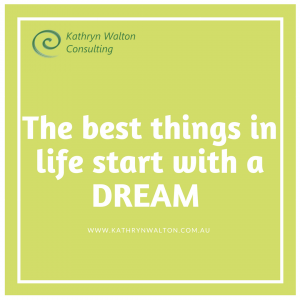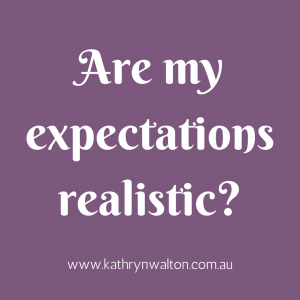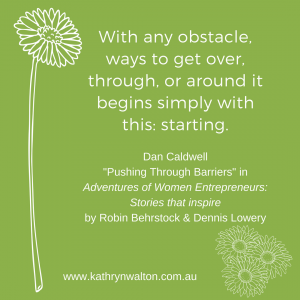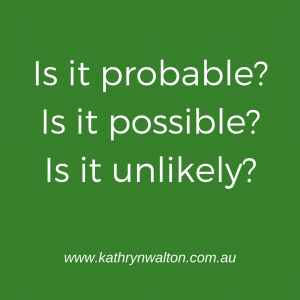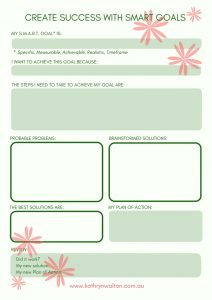“How CAN you keep exercising outdoors in the drought????”
I’m writing this blog post because over the past year lots of people have said they just don’t know how I can keep exercising outdoors in the drought. We typically think of nature as nurturing and health-giving, a place of solace and retreat. Being confronted by a shockingly dry environment with frequent bushfires, brown landscapes that used to be green, National Park closures, and dry waterways, it’s clear that nature has a shadow side as well.

“It’s REALLY tough!”
To be completely open, I’ve also questioned how I can keep exercising outdoors in the drought. The whole climatic situation has been tough. Really tough! The ripple effect of the drought has swept up farmers, wildlife, local businesses, ‘town’ people, and those in the cities. We’re all affected in various ways either directly or indirectly. There’s a pervasive and damaging sense of hopelessness, and like any emotion, it’s contagious. Yet a sense of hope is exactly what we need to survive difficult or traumatic situations. Where there’s hope, there’s life. Without it, we spiral into a self-fulfilling doom and gloom mentality.
Exercising outdoors has been very confronting. I can’t walk on my home trails without seeing or smelling death. The brown dust colours my view as if I’m looking through a sepia filter. Ticks are in plague proportions. Swarms of good ole slow country flies are driving me nuts. The heat is unbearable. And there’s not enough water for washing your hair after a workout.
My stress tank is overflowing! How about you?
My connection with nature runs very deep, as does my yearning to be active. But in this tough time, I also came down with shingles. My stress tank began to overflow. I had to do something differently. Bushwalking and bike riding whilst constantly thinking about the drought and feeling unwell was contributing to the stress.
So what CAN you do when being in nature is SO stressful?
You have to put your creative thinking hat on to find a solution when things get tough. What worked before is no longer effective. The questions people keep asking me (and that I wanted solutions for too) are:
- How can I reconnect with the side of nature that heals and nurtures and teaches?
- How can I enjoy my time outdoors without feeling overwhelmed?
- What mindset shift do I need?
- What actions do I need to take?
- How can I keep exercising everyday?

So I set you to explore this new territory and experiment with the possibilities!
Here are 6 solutions that I’ve discovered. I hope they work for you too!
1. Podcasts
If you haven’t got on the bandwagon yet, then you really need to! Podcasts are audio shows, a bit like a radio show, that you can either stream from the Internet or download onto a device to listen to later. I download episodes from my favourite shows onto my phone, plug my ear phones in, and listen to inspiring, energising interviews while I walk. Instead of focusing my attention on my surroundings, I lose myself in the show and arrive back home with excitement for life and new ideas to put into action. Watch out for a future blog post about my favourite podcasts suitable for Android or Apple.
2. Set an Intention
Before heading out on a walk or ride, I often choose an intention – something I want to focus on or get out of my experience. This is a personal choice, so it can be anything at all. Some of the intentions I’ve set for myself go like this:
“Today I will notice new growth”
“Today I will focus on the sensations in my legs”
“Today I will find fun”
“Today I will discover colour”
“Today I will notice sounds”
3. Mindful Walking
With mindful walks I like to focus on one sense at a time and when I notice my mind has wandered away from my body, I gently bring it back to rest on my senses. I’ve especially enjoyed focusing on my sense of hearing – noticing the many different bird calls, the sounds of the breeze in the trees, my footsteps on the ground, insects buzzing around, wallabies bounding along. I usually focus on one sense for a few minutes, then move onto another one. With my sense of touch, I focus on how it feels to have clothes on my skin, feet in my shoes as I take a step, muscle movement, sunscreen on my face, leaves brushing my skin. When I focus on my sense of sight, I challenge myself to find colours and light and patterns that I don’t normally notice. You can also use a meditation app with a guided practice for mindfulness of walking.
4. Photography
I’ve discovered that taking photos along the way really helps me to bring my attention to the beautiful things. Sometimes I combine photography with an intention or a mindful walk so that I can collect images that bring me joy, and at the same time it helps my brain to collect evidence that there is hope.
5. Make it Social
Walking or riding with other people can be really helpful because the focus is on that invisible connection between myself and someone else. Give me a deep and meaningful conversation with a friend any day, plenty of laughs, a chance to debrief the stuff of life that drives me crazy, and to celebrate the rest. Sometimes, too, there’s a sneaky competitive edge that sees me running or riding faster when I’m with others. Inevitably that ends up in a heap of laughs too, gasping for air, heart pounding out of my chest, and the satisfaction that I’ve done my weekly interval training.
6. Mix it up
I’ve always said “I’m not a gym person”. I’ve built a business and identity around my outdoor adventures. BUT, being unwell and being in the drought has helped me re-set my rigid thinking about exercise. Instead of going outdoors everyday, I went to an aqua class with a friend, did loops of the river walk in town where it’s a bit greener, and took up an irresistible offer to join a gym. I’ve extended the variety of exercise I get which is a fantastic thing! It will help me enjoy and have greater success with my outdoor adventuring which I’m still doing at least a couple of times a week. Going to the gym also gets me focusing on my sadly neglected strength training (one of those things I really ‘should’ be doing at my age!), all whilst staying out of the flies and heat. I get to make new friends and pace myself sensibly (sort of) as I recuperate. At home I’ve also begun a more regular yoga practice – something I’ve been wanting to do but it’s been a lower priority until now.
To Sum Up: Choose Your Focus!
It’s really all about CHOOSING WHAT YOU FOCUS ON. When we feel like we have  no control or influence over a situation (like the drought), it’s important to push the pause button, think about it creatively, and choose your focus. Like many people, I’ve struggled with exercising outdoors in the drought. The ideas I’ve shared in this article have made a huge difference to me, my mental state and my physical health. My hope is that they help you too.
no control or influence over a situation (like the drought), it’s important to push the pause button, think about it creatively, and choose your focus. Like many people, I’ve struggled with exercising outdoors in the drought. The ideas I’ve shared in this article have made a huge difference to me, my mental state and my physical health. My hope is that they help you too.
Let me know what works for you! Have you got some other ideas to share with our readers?

Discovering mountain biking as life’s ultimate parallel universe in her middle age, Kathryn Walton shares information and reflections in ‘Daisy Spoke’ that inform, inspire and empower women to a healthy and active lifestyle.

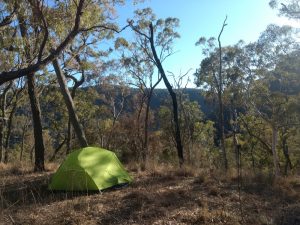
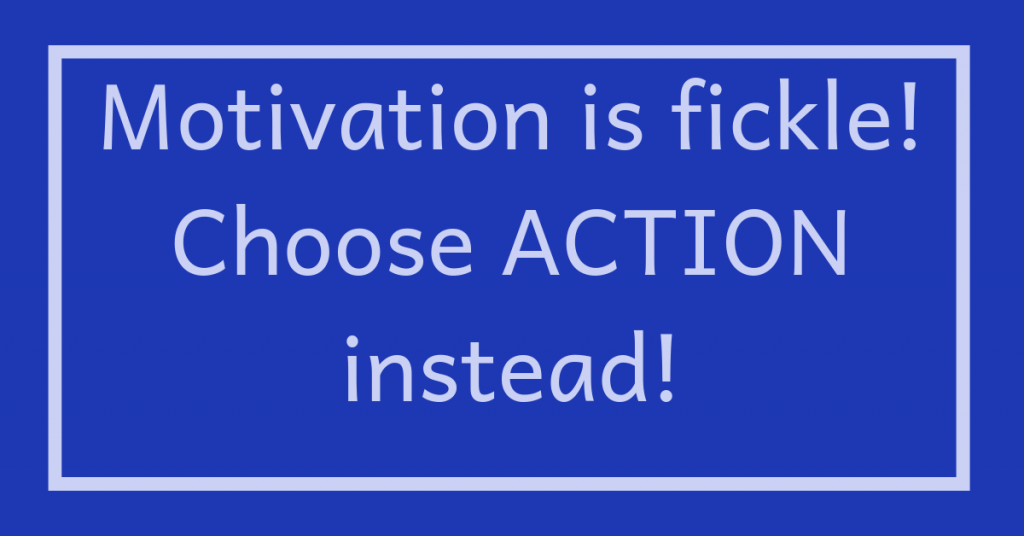
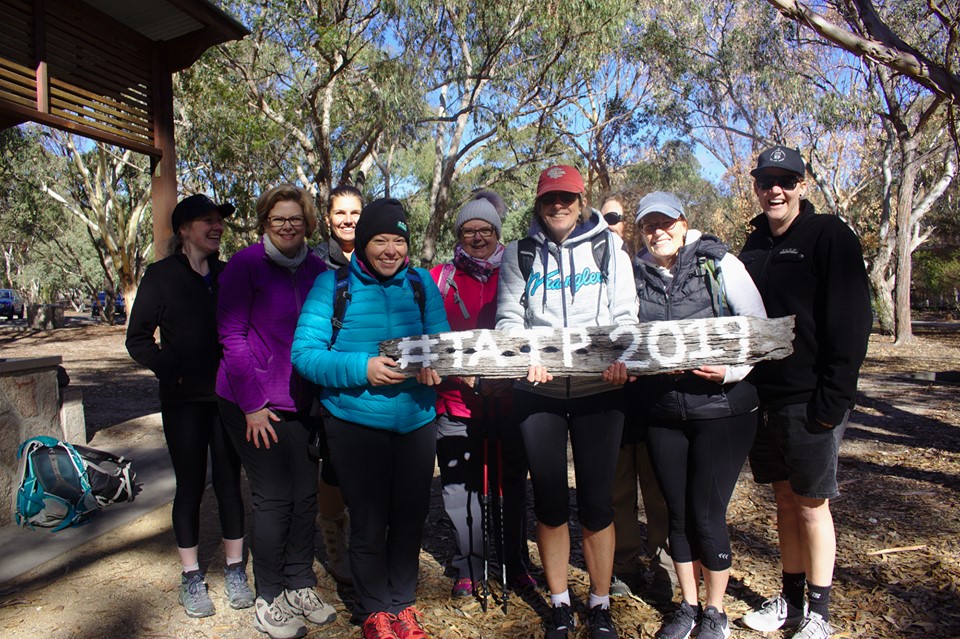

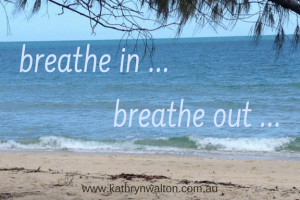
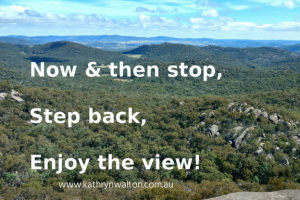
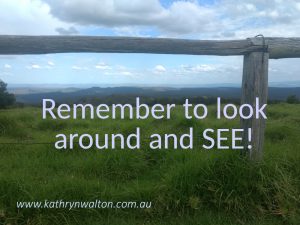
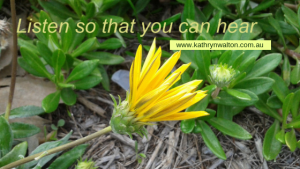

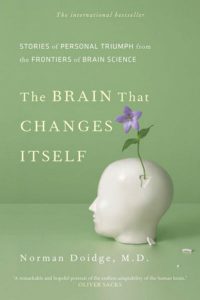


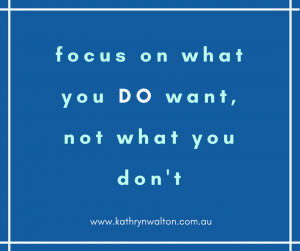
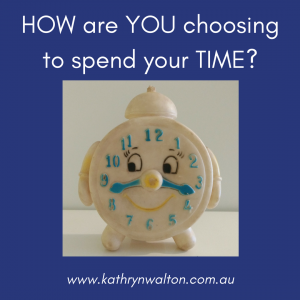
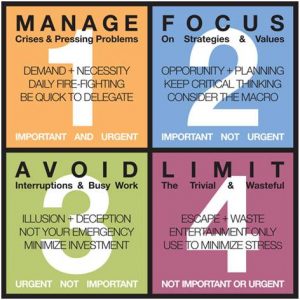
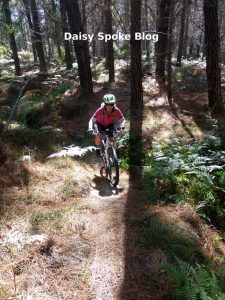 was missing it.
was missing it. 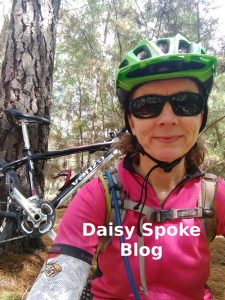 I’ve been practising and teaching this technique for a lot of years, and yet still I sometimes forget to do it when the moment arises. The thing is that on Sunday morning I DID NOTICE those fearful thoughts bouncing round my head. And guess what?
I’ve been practising and teaching this technique for a lot of years, and yet still I sometimes forget to do it when the moment arises. The thing is that on Sunday morning I DID NOTICE those fearful thoughts bouncing round my head. And guess what? 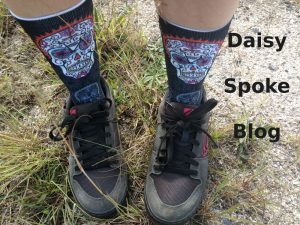 of short hills engaging my quads in an exertion that a couple of years ago would have been painful (if not impossible)! I pedalled in a higher gear than normal and found it easier than expected.
of short hills engaging my quads in an exertion that a couple of years ago would have been painful (if not impossible)! I pedalled in a higher gear than normal and found it easier than expected. 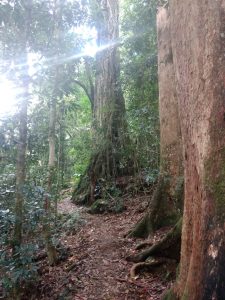 My Year of Adventure in fact began on New Year’s Eve as I set off on a week long road trip with my family to Melbourne and back home again traversing half the eastern side of Australia. With one daughter now settled in Victoria, I refocused my attention on developing new online programs and resources for women. I was thrilled to take my “February Adventure” to Hahndorf in South Australia to participate in and present at the Thriving Women 2018 conference. My “March Adventure” was closer to home with weekends and day trips to several magnificent National Parks, immersing myself in one of my great loves – bushwalking.
My Year of Adventure in fact began on New Year’s Eve as I set off on a week long road trip with my family to Melbourne and back home again traversing half the eastern side of Australia. With one daughter now settled in Victoria, I refocused my attention on developing new online programs and resources for women. I was thrilled to take my “February Adventure” to Hahndorf in South Australia to participate in and present at the Thriving Women 2018 conference. My “March Adventure” was closer to home with weekends and day trips to several magnificent National Parks, immersing myself in one of my great loves – bushwalking.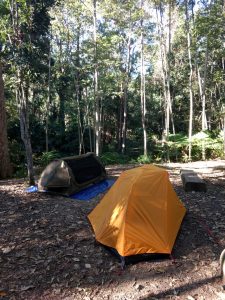 a lot of “what if’s” and identified as a fearful and hesitant adventurer rather than a brave one. My April Adventure has brought up a number of ‘firsts’ for me – I’ve left half my family behind, I’m travelling with only one companion (my younger daughter) through some fairly remote parts of Australia, I’m camping in a tent by myself, I’m having to step up and make decisions I’ve not been responsible for previously, and I’m operating a business far from home and frequently without mobile reception or internet connection.
a lot of “what if’s” and identified as a fearful and hesitant adventurer rather than a brave one. My April Adventure has brought up a number of ‘firsts’ for me – I’ve left half my family behind, I’m travelling with only one companion (my younger daughter) through some fairly remote parts of Australia, I’m camping in a tent by myself, I’m having to step up and make decisions I’ve not been responsible for previously, and I’m operating a business far from home and frequently without mobile reception or internet connection.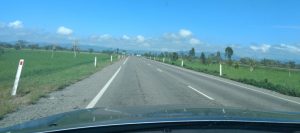
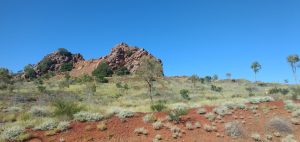
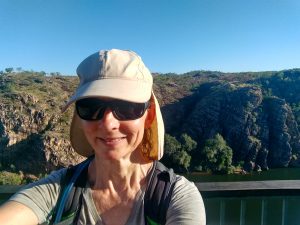
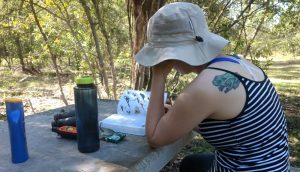
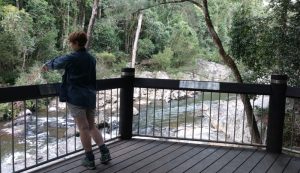

 anything they want. It’s a message that’s intended to be encouraging by chipping away at the gender stereotypes our society has constructed over many generations. For so many reasons we know that women can, and do, achieve amazing things in our world. There are many wonderful role models who inspire and propel us towards our own version of success.
anything they want. It’s a message that’s intended to be encouraging by chipping away at the gender stereotypes our society has constructed over many generations. For so many reasons we know that women can, and do, achieve amazing things in our world. There are many wonderful role models who inspire and propel us towards our own version of success.  S
S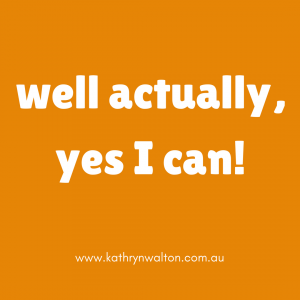 The beauty of the process is that you don’t have to even have any real idea of where you want your future to be heading in order to benefit from this retreat. Yo
The beauty of the process is that you don’t have to even have any real idea of where you want your future to be heading in order to benefit from this retreat. Yo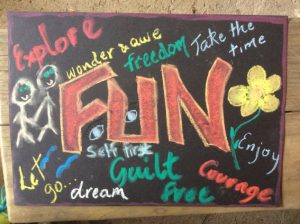 powerful creative activities. The gentle pace will support you to make valuable connections with
powerful creative activities. The gentle pace will support you to make valuable connections with 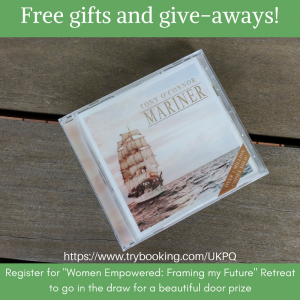 We will be giving away some special bonuses and door prizes at the retreat including beautiful journals, meditation cushions, carry bags, a Tony O’Connor CD of relaxation music, and more – fabulous gifts to support your self-care and progression!
We will be giving away some special bonuses and door prizes at the retreat including beautiful journals, meditation cushions, carry bags, a Tony O’Connor CD of relaxation music, and more – fabulous gifts to support your self-care and progression!